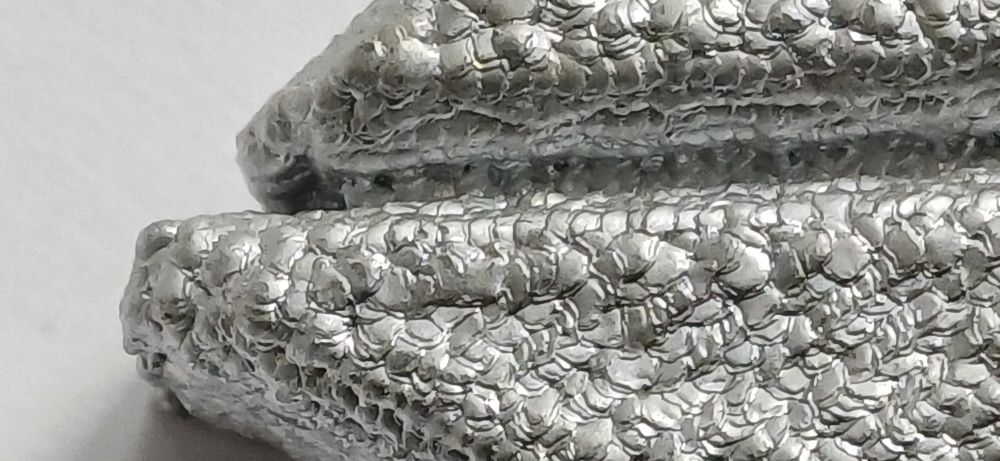Are you surfing the hype of Additive Manufacturing and about to take a deep dive without a life vest?
No fear, M A M Solutions is the life vest. If it’s the protection from drowning in the sea of confusion that you seek as you embark on a journey with metal AM, then you need not look any further. Every project with M A M Solutions starts with a SWOT analysis on the metallurgical aspects of Additive Manufacturing (AM) compared to the existing conventional methods in use at your business.
Strengths:
- Materials Properties: Conventional materials usually come with just a single set of known properties. AM can produce parts with unique materials properties, such as functionally graded materials.
- Microstructure Control: The metals that are used in wrought billet, bar and/or sheet have fixed microstructures. AM opens up the possibility to control the microstructure of the part during the manufacturing process, which can lead to superior mechanical properties.
Weaknesses:
- Inherent Defects: The defects found in conventional materials have been studied and their effects on conventional process are well understood. On the other hand, AM processes can introduce defects such as porosity or residual stresses into the part, which can negatively affect the mechanical properties.
- Surface Roughness: Conventionally machined parts have controlled surface finishes over the entire component surface. Whereas, parts produced by AM often have a surface finish with unknown levels of roughness in the different regions of the part. If left uncontrolled this can lead to a higher rate of fatigue crack initiation.
Opportunities:
- New Alloys: In the majority of cases in conventional manufacturing alloys are selected from standard stock materials to be the closest match to requirements, or parts are designed based on the known properties of these standard materials. By using AM this opens up the possibility of creating new alloys that are not readily available, or even possible, with conventional methods.
- Advanced Heat Treatment: In a lot of cases heat treatment is a standard process step in the end-to-end chain of producing parts. This relies on set procedures to achieve a known set of properties. With AM, not only is there the possibility of using parts in the as-built condition, through post-processing heat treatments there is the opportunity to further refine, or create entirely new, microstructure and improve the properties of these materials.
Threats:
- Quality Control: Conventionally produced parts also have set ways in which to carry out testing and inspection. Not knowing how these can be applied to AM parts puts the quality at risk, since ensuring consistent material properties in AM parts can be challenging due to the layer-by-layer manufacturing processes.
- Limited Understanding: Probably, the most significant threat facing the metallurgy of AM is still the limited understanding of the relationship between the process parameters and the resulting material properties. IN most cases for conventional methods the materials properties are well documented and finding information is easily accessible.
Presented above is a general analysis and it is necessary to understand that the specifics will vary depending on the exact AM technology and the materials being considered, as well as the specific application in each case. M A M Solutions will be the dedicated partner you need when you are consider these factors.
Following the detailed SWOT analysis, here are just two courses of action that may be suggested in order for your business to acquire the necessary skills and understanding to carry on working with AM:
- Basic Introduction to Metallurgy: An entry level course for non-metallurgists providing a sound understanding of the scientific principles of metallurgy and how to apply them in an industrial context. It’s important to make sure that any course that is undertaken provides a general introduction to metal additive manufacturing, and delivers the minimum knowledge to be able to perform quality analysis on finished AM parts.
- Deep Dive into AM: If you already possess the prerequisite basic understanding, you can move on to being more specialised by obtaining in-depth knowledge about all the relevant metal AM processes, their capabilities, system design, and end-to-end process chain modelling. How deep you dive is entirely your choice. However, with a richer understanding of these aspects of metal AM and linking them to the fundamentals of metallurgy of non-ferrous alloys, light alloys, and high temperature alloys, for instance, it might set you on a pathway to being able to develop different alloys with customised properties.
In the end, however you choose to learn about metal Additive Manufacturing there is no substitute for experience. By working with M A M Solutions you will increase the probability that acquiring hands-on experience with AM technologies will result in positive outcomes for your business.

